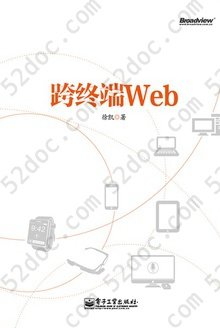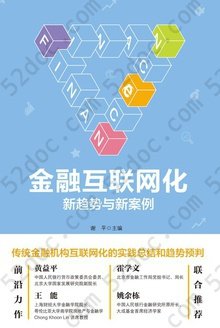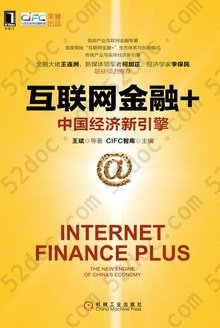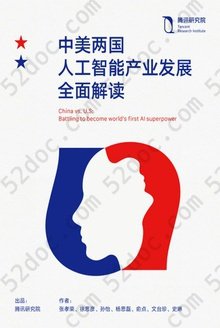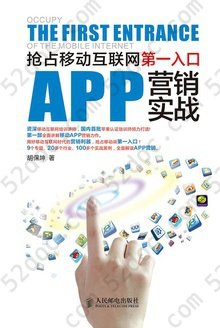注重体验与质量的电子书资源下载网站
分类于: 编程语言 设计
简介
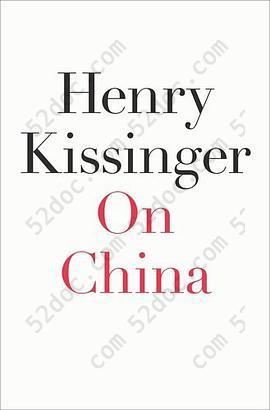
On China 豆 8.6分
资源最后更新于 2020-08-26 06:50:11
作者:Henry Kissinger
出版社:Penguin Press
出版日期:2011-01
ISBN:9781594202711
文件格式: pdf
标签: 基辛格 政治 中国 国际关系 外交 历史 China Politics
简介· · · · · ·
In this sweeping and insightful history, Henry Kissinger turns for the first time at book-length to a country he has known intimately for decades, and whose modern relations with the West he helped shape. Drawing on historical records as well as his conversations with Chinese leaders over the past forty years, Kissinger examines how China has approached diplomacy, strategy, and...
目录
Preface xv
Note on Chinese Spellings xix
Prologue 1
Chapter 1 The Singularity of China 5
The Era of Chinese Preeminence 8
Confucianism 13
Concepts of International Relations: Impartiality or Equality? 16
Chinese Realpolitik and Sun Tzu's Art of War 22
Chapter 2 The Kowtow Question and the Opium War 33
The Macartney Mission 35
The Clash of Two World Orders: The Opium War 45
Qiying's Diplomacy: Soothing the Barbarians 51
Chapter 3 From Preeminence to Decline 57
Wei Yuan's Blueprint: "Using Barbarians Against Barbarians," Learning Their Techniques 60
The Erosion of Authority: Domestic Upheavals and the Challenge of Foreign Encroachments 64
Managing Decline 69
The Challenge of Japan 77
Korea 80
The Boxer Uprising and the New Era of Warring States 86
Chapter 4 Mao's Continuous Revolution 91
Mao and the Great Harmony 92
Mao and International Relations: The Empty City Stratagem, Chinese Deterrence, and the Quest for Psychological Advantage 97
The Continuous Revolution and the Chinese People 106
Chapter 5 Triangular Diplomacy and the Korean War 113
Acheson and the Lure of Chinese Titoism 118
Kim Il-sung and the Outbreak of War 122
American Intervention: Resisting Aggression 129
Chinese Reactions: Another Approach to Deterrence 133
Sino-American Confrontation 143
Chapter 6 China Confronts Both Superpowers 148
The First Taiwan Strait Crisis 151
Diplomatic Interlude with the United States 158
Mao, Khrushchev, and the Sino-Soviet Split 161
The Second Taiwan Strait Crisis 172
Chapter 7 A Decade of Crises 181
The Great Leap Forward 181
The Himalayan Border Dispute and the 1962 Sino-Indian War 184
The Cultural Revolution 192
Was There a Lost Opportunity? 197
Chapter 8 The Road to Reconciliation 202
The Chinese Strategy 203
The American Strategy 213
First Steps-Clashes at the Ussuri River 215
Chapter 9 Resumption of Relations: First Encounters with Mao and Zhou 236
Zhou Enlai 241
Nixon in China: The Meeting with Mao 255
The Nixon-Zhou Dialogue 262
The Shanghai Communiqué 267
The Aftermath 273
Chapter 10 The Quasi-Alliance: Conversations with Mao 275
The "Horizontal Line": Chinese Approaches to Containment 277
The Impact of Watergate 292
Chapter 11 The End of the Mao Era 294
The Succession Crisis 294
The Fall of Zhou Enlai 297
Final Meetings with Mao: The Swallows and the Coming of the Storm 303
Chapter 12 The Indestructible Deng 321
Deng's First Return to Power 322
The Death of Leaders-Hua Guofeng 327
Deng's Ascendance-"Reform and Opening Up" 329
Chapter 13 "Touching the Tiger's Buttocks": The Third Vietnam War 340
Vietnam: Confounder of Great Powers 341
Deng's Foreign Policy-Dialogue with America and Normalization 348
Deng's Journeys 356
Deng's Visit to America and the New Definition of Alliance 360
The Third Vietnam War 367
Chapter 14 Reagan and the Advent of Normalcy 377
Taiwan Arms Sales and the Third Communiqué 381
China and the Superpowers-The New Equilibrium 387
Deng's Reform Program 396
Chapter 15 Tiananmen 405
American Dilemmas 411
The Fang Lizhi Controversy 428
The 12- and 24-Character Statements 437
Chapter 16 What Kind of Reform? Deng's Southern Tour 440
Chapter 17 A Roller Coaster Ride Toward Another Reconciliation: The Jiang Zemin Era 447
China and the Disintegrating Soviet Union 456
The Clinton Administration and China Policy 461
The Third Taiwan Strait Crisis 471
China's Resurgence and Jiang's Reflections 478
Chapter 18 The New Millennium 487
Differences in Perspective 493
How to Define Strategic Opportunity 497
The National Destiny Debate-The Triumphalist View 503
Dai Bingguo-A Reaffirmation of Peaceful Rise 508
Epilogue: Does History Repeat Itself? The Crowe Memorandum 514
Toward a Pacific Community? 527
Afterword to the paperback edition 531
Notes 549
Index 585
Note on Chinese Spellings xix
Prologue 1
Chapter 1 The Singularity of China 5
The Era of Chinese Preeminence 8
Confucianism 13
Concepts of International Relations: Impartiality or Equality? 16
Chinese Realpolitik and Sun Tzu's Art of War 22
Chapter 2 The Kowtow Question and the Opium War 33
The Macartney Mission 35
The Clash of Two World Orders: The Opium War 45
Qiying's Diplomacy: Soothing the Barbarians 51
Chapter 3 From Preeminence to Decline 57
Wei Yuan's Blueprint: "Using Barbarians Against Barbarians," Learning Their Techniques 60
The Erosion of Authority: Domestic Upheavals and the Challenge of Foreign Encroachments 64
Managing Decline 69
The Challenge of Japan 77
Korea 80
The Boxer Uprising and the New Era of Warring States 86
Chapter 4 Mao's Continuous Revolution 91
Mao and the Great Harmony 92
Mao and International Relations: The Empty City Stratagem, Chinese Deterrence, and the Quest for Psychological Advantage 97
The Continuous Revolution and the Chinese People 106
Chapter 5 Triangular Diplomacy and the Korean War 113
Acheson and the Lure of Chinese Titoism 118
Kim Il-sung and the Outbreak of War 122
American Intervention: Resisting Aggression 129
Chinese Reactions: Another Approach to Deterrence 133
Sino-American Confrontation 143
Chapter 6 China Confronts Both Superpowers 148
The First Taiwan Strait Crisis 151
Diplomatic Interlude with the United States 158
Mao, Khrushchev, and the Sino-Soviet Split 161
The Second Taiwan Strait Crisis 172
Chapter 7 A Decade of Crises 181
The Great Leap Forward 181
The Himalayan Border Dispute and the 1962 Sino-Indian War 184
The Cultural Revolution 192
Was There a Lost Opportunity? 197
Chapter 8 The Road to Reconciliation 202
The Chinese Strategy 203
The American Strategy 213
First Steps-Clashes at the Ussuri River 215
Chapter 9 Resumption of Relations: First Encounters with Mao and Zhou 236
Zhou Enlai 241
Nixon in China: The Meeting with Mao 255
The Nixon-Zhou Dialogue 262
The Shanghai Communiqué 267
The Aftermath 273
Chapter 10 The Quasi-Alliance: Conversations with Mao 275
The "Horizontal Line": Chinese Approaches to Containment 277
The Impact of Watergate 292
Chapter 11 The End of the Mao Era 294
The Succession Crisis 294
The Fall of Zhou Enlai 297
Final Meetings with Mao: The Swallows and the Coming of the Storm 303
Chapter 12 The Indestructible Deng 321
Deng's First Return to Power 322
The Death of Leaders-Hua Guofeng 327
Deng's Ascendance-"Reform and Opening Up" 329
Chapter 13 "Touching the Tiger's Buttocks": The Third Vietnam War 340
Vietnam: Confounder of Great Powers 341
Deng's Foreign Policy-Dialogue with America and Normalization 348
Deng's Journeys 356
Deng's Visit to America and the New Definition of Alliance 360
The Third Vietnam War 367
Chapter 14 Reagan and the Advent of Normalcy 377
Taiwan Arms Sales and the Third Communiqué 381
China and the Superpowers-The New Equilibrium 387
Deng's Reform Program 396
Chapter 15 Tiananmen 405
American Dilemmas 411
The Fang Lizhi Controversy 428
The 12- and 24-Character Statements 437
Chapter 16 What Kind of Reform? Deng's Southern Tour 440
Chapter 17 A Roller Coaster Ride Toward Another Reconciliation: The Jiang Zemin Era 447
China and the Disintegrating Soviet Union 456
The Clinton Administration and China Policy 461
The Third Taiwan Strait Crisis 471
China's Resurgence and Jiang's Reflections 478
Chapter 18 The New Millennium 487
Differences in Perspective 493
How to Define Strategic Opportunity 497
The National Destiny Debate-The Triumphalist View 503
Dai Bingguo-A Reaffirmation of Peaceful Rise 508
Epilogue: Does History Repeat Itself? The Crowe Memorandum 514
Toward a Pacific Community? 527
Afterword to the paperback edition 531
Notes 549
Index 585



